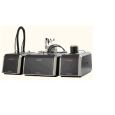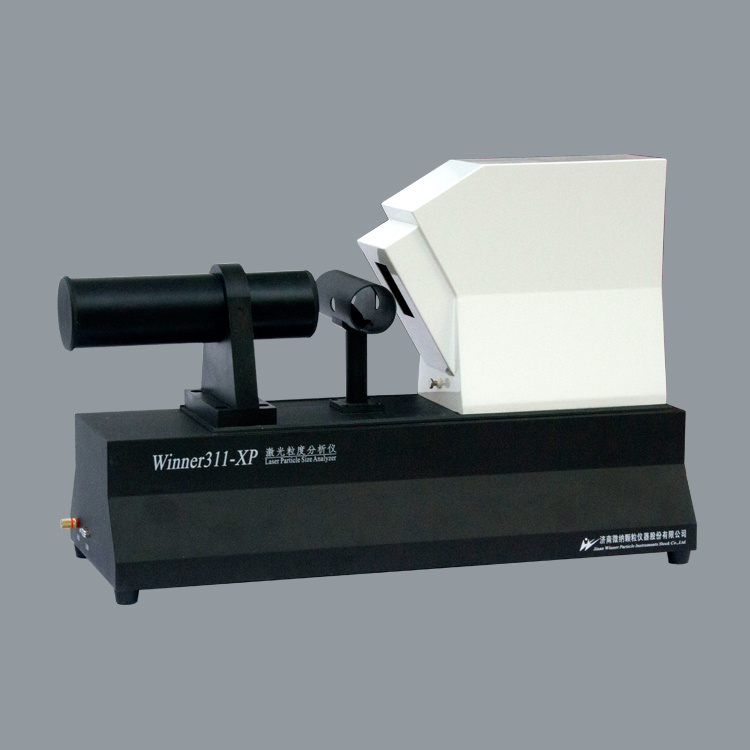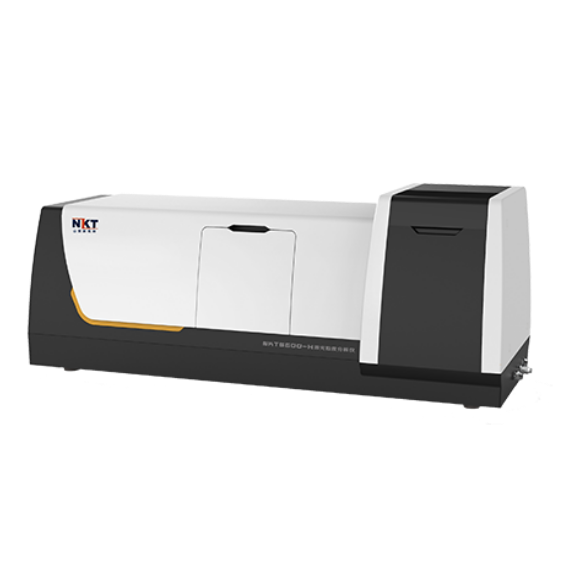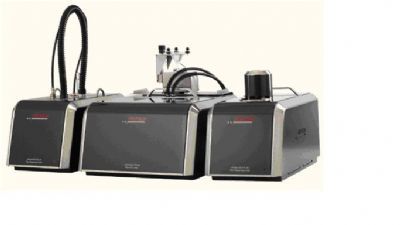
Fritsch Analysette 22激光粒度仪凭借其稳定的性能、可靠的测量结果对各种矿物质及黏土进行粒度分布分析,并将具有代表性的样品进行后续的总碳含量与表面积的测定。
方案详情

Eurasian J Soil Sci 2015,4(3]xx -xxEurasian Journal of Soil ScienceJournal homepage : http://fesss.org/eurasian_journal_of_soil_science.aspF.E.S.S.5 D. Khaydapova et al./ Eurasian J Soil Sci 2015, 4 (3] xx -xx Rheological properties of different minerals and clay soilsDolgor Khaydapova *, Evgeny Milanovskiy, Evgeny Shein Moscow State University, Soil Science Faculty, Department of Soil Physics and Reclamation, Moscow, Russia Abstract Article Info Received: 11.08.2014Accepted: 27.02.2015 Rheological properties of kaolinite, montmorillonite, ferralitic soil of the humid subtropics(Norfolk island, southwest of Oceania), alluvial clay soil of arid subtropics (Konya province,Turkey) and carbonate loess loam of Russian forest-steppe zone were determined. A parallelplate rheometer MCR-302 (Anton Paar, Austria) was used in order to conduct amplitude sweeptest. Rheological properties allow toassess quantitatively structural bonds and estimatestructural resistance to a mechanicalimpact.. Measurements were carried out on samplespreviously pounded and capillary humidified during 24 hours In the amplitude sweep methodan analyzed sample was placed between two plates. The upper plate makes oscillating motionswith gradually extending ampltude. Software of the device allows to receive several rheologicalparameters such as elastic modulus (G, Pa), viscosity modulus (G", Pa), linear viscoelasticityrange (G>>G"), and point of destruction of structure at which the elastic modulus becomes equalto the viscosity modulus (G-G"-crossover). It was found out that in the elastic behavior at G '>>G " strength of structural links of kaolinite, alluvial clay soil and loess loam constituted one orderof 105 Pa. Montmorillonit had a minimum strength -104 Pa and ferrallitic soil of Norfolk islandhas]-. amaximum one -106 Pa. At the same time montmorillonite and ferralitic soil werecharacterized by the greatest plasticity. Destruction of their structure (G '= G") took place only inthe cases when strain was reaching 11-12%.Destraction of the kaolinite structure happened at5% of deformation and of the alluvial clay soil and loess loam-at 4.5%. Keywords: soil mechanics, soil structure, rheology, storage modulus, loss modulus, linearviscoelastic range C 2015 Federation of Eurasian Soil Science Societies. All rights reserved Introduction Solid phase of soil - is a polydisperse and polycomponent organomineral system consisting of primary andsecondary products of mineral soil - secondary clay minerals, plant residues, their partial decompositionproducts, humus, salts and oxides (Gummatov anddPachepsky, 1991). It is known that structuralcharacteristics and rheological properties of soils are correlated with the content of the soil solid phaseelements of solid phase of soil: clay mineral composition, organic matter, salts, etc (Sokolov, 1973).Numerous studies (Khaydapova et al., 2013; Milanovskiy, 2009; Shein and Milanovskii, 2003; Markgrafet al.,2006) showed that the organic matter played the main role in the formation of the resistance of the soilstructure to mechanical and water stresses. Clay minerals represent the most active part of a solid phase ofsoils to various interactions. Kaolinites and montmorillonites represent two groups of the most widespreadminerals. These minerals differ from each other by lattice structure and respectively physical andrheological properties. Related to kaolinite group minerals have monolayer lattice with rigid interlayerconnections and small interplanar spacing equal to 7.1A. Montmorillonites are characterized by three layerlattice with movable connections between them and a wide interplanar spacing equal to 17.6 A what allows ( Corresponding author. ) ( M oscow State University, Soil Science Faculty, Department of Soil Physics an d Reclamation, Moscow, Russia ) ( Tel. : +74959393684 E-mail address : dk ha ydapova@yandex.r u ) ( ISSN: 2147-4249 ) these minerals to absorb a lot of water and other substances and to expand (Gorbunov, 1974). Therefore adominance of this or that minerals in soil causes different physical and rheological behavior of soils. In thispaper we have tried to evaluate the rheological properties of individual minerals -kaolinite, montmorillonite-and clay soils with a very low content of organic matter. Material and Methods The main objects of this study were minerals kaolinite Dutch and montmorillonite (bentonite clay,Turkmenistan, Oglandy), calcareous loess loam of a forest-steppe zone (Kursk region, Russia), agriculturalalluvial calcareous soils (Calcic Fluvisols Oxyaquic, WRB, 2006) of the arid subtropical climate KonyaProvince (Cumra area, Turkie), and ferrallitic soil of the humid subtropics (island Norfolk, southwest ofOceania) [Ferrasols, WRB, 2006). The ferrasols of the humid subtropical climate were characterized by ahigh content of organic matter (0M). In order to neutralize the influence of OM agents on physical propertiesof the soils soil samples were treated by hydrogen peroxidewhichremoved OM from them.For all soil samples particle size distribution, total carbon content, total surface area were determined:particle size distribution - by laser diffraction particle size on ANALYSETTE-22 (Germany), previouslysamples were dispersed ultrasonically (450-500J·ml-1) with a Branson Sonifier250 (Branson,CT, USA) for5 min, total carbon content- by analyzer AN-7529, the total surface area - by low-temperature nitrogenadsorption. Table 1 presents data of the humidity, content of organic matter (0M), total surface area andparticle size distribution in the samples. Table1.Soil properties Objects Contents,(%/um] <2 2-5 5-10 10-50 50-250 250-1250 Kaolinit 86.82 16,89 26,02 46,39 23,96 3,63 0,00 0,00 Montmorillonite 156.64 46,69 16,33 36.20 22,73 24,74 0,00 0,00 Fluvisols 10-20 75.26 1,00 78,1 41.18 21,66 16,65 16,22 1,57 2,72 Loess loam 140-150 57.58 0,51 23,27 18,91 20,61 14,69 45,40 0,35 0,04 Ferrasols 10-20 89.25 0.06 67,63 52,60 4,98 11,48 0.94 0,00 0,00 Mineralogical composition of the objects. Mineralogical composition of the alluvial clay soil of the Konya Province (Cumra area, Turkey) was asfollows: illite (59%), kaolinite and chloritic (30%]. For humid subtropical ferrallitic soils the kaolinitecontent was predominant (Loze and Mate, 1998; Milannovskiy, 2009). Calcareous loess loam Kursk regioncontainedmineralssofmontmorillonite-hydromicagroup with1 apredominance of montmorillonite(Gorbunov,1974). Kaolin is a clay mineral of 1:1 lattice type with steady interlayer distance of 0.7 nm and not extending lattice.Montmorillonite is a clay mineral of 2:1 lattice type with variable interlayers distance - from 1.0 to 1.75 nm(the mineral possesses an extending lattice). Illites is a clay mineral of 2:1 lattice type with not extendinglattice (Gorbunov,1974) Due to the different structure of the lattice the specific surface areas of theseminerals determined by nitrogen adsorption at low temperature were different -16.9 m2 /g-forkaolin, and46 m²/g-for montmorillonite (Table 1). As a result the water absorption was different too: kaolin humidity87% and montmorillonite one -at 157%. Rheological measurements. The study of rheological behavior of soil pastes was carried out on a modular rheometer MCR302 (AntonPaar, Austria using a measuring system plate-plate PP25 by amplitude sweep test. Amplitude sweep testswere conducted in order to obtain information on the behavior of substrate and especialy its elastic part, therange of linear viscoelasticity marked as the area between the points of the parallel running curves elasticmodulus G 'and the viscous modulus G" and their transition - crossover or deformation limit (yL). Theelastic modulus in behavior of substance prevails to a deformation limit, after it the viscosity modulus ofbehavior of substance prevails (Mezger, 2011; Markgraf et al., 2006). For carrying out amplitude sweep teststhe following parameters were chosen: a plate distance -2-3 mm, a rest period before the measurement-15 s, deformation as logarithmic range from 0.001 to 100%, the frequency was set at a constant value of 0.5 Hz.During all tests a constant temperature of 20 oC regulated by a Peltier unit was given. Sample preparation: 3g air-dry soil was placed in a small cylinder with a mesh bottom and filter paper, then it was lightlycompacted and placed for a day on capillary saturation. After that the humidified sample was accuratelymoved on the bottom plate of a rheometer. Results and Discussion The ferrasols and fluvisols contain the greatest number of particles of the size <2 mkm (Figure 1). Themontmorillonite differs from the kaolinite by the larger content of particles of the size 10-50 mkm. The loessloam is characterized by the greatest maintenance of particles of 10-50 microns in size. According to USDAclassification system the kaolinit, the montmorillonit, and the loess loam can be characterized as silt loam,fluvisols- as silty clay, and ferrasols - as clay. Figure 2 shows the curves of the elastic modulus and viscositymodulus of kaolin and montmorillonite. Figure 2. Amplitude sweep test of clay minerals: G’-elastic modulus, G" - viscosity modulus, LVE-range -linearviscoelastic range; G'=G”-crossover The elastic modulus of the kaolin is close to those of the rest and makes up 105 Pa. Elastic modulus ofmontmorrilinite is much less -104 Pa. The linear viscosity-elasticity range (LVE-range) of the kaolin extendsto 0.01% of deformation,while of the montmorillonite- up to 0.5%. The crossover of elastic modulus G'andviscous modulus G" or deformation limit (yL) for the kaolin occurs at 5.35% of deformation, and for themontmorillonite -at 11,4%. Apparently the kaolin forms more stronger interparticle connections than the montmorillonite. Due to its stronger connections under load the kaolin quickly loses its elastic properties,destruction of its structure happens at 5.35% of deformation. The montmorrilonit with its weakerinterparticle couplings possesses more plastic properties than the kaolinite, destruction of its structureoccurs at larger values of deformation, namely at 11,4%. In comparison with the montmorillonite thebehavior of the kaolin is characterized as friable: its stronger interparticle bonds collapse at smallerloadings. Plastic behavior of the montmorillonite allows it to maintain larger loadings, than kaolinite.Probably the more plastic behavior of the montmorrilonite is explained by a three-layer structure of latticewith mobile bonds which allows the mineral to swell, expand, and exhibit plastic properties. Figure 3. shows the curves of the elastic modulus and viscosity modulus of the kaolinite, ferrasols andfluvisols. Figure 3. Amplitude sweep test of the kaolin, ferrasols and fluvisols: G'-elastic modulus, G”- viscosity modulus, LVE-range-linear viscoelastic range; G=G"-crossover. Kaolinite and non swelling minerals predominate in the mineralogical composition of these soils. As can beseen from the figure the compared curves lie very close to each other. The only difference is a larger value ofthe LVE-range in the case of the fluvisol. The ferrasols have greater plasticity, their crossover happens at12% of deformation. This is probably due to their more fine texture. Figure 4. Amplitude sweep test of the loess loam and montmorrilonit: G'-elastic modulus, G"-viscosity modulus, LVE-range -linear viscoelastic range, G'=G"crossover. Figure 4 shows the curves of the elastic modulus, viscosity modulus of the loess loam and montmorrilonit. Ascan be seen from the fig.4 the curves differ from each other. The loess loam elastic modulus considerablyexceeds a montmorillonite elastic modulus at loading of the close to zero. But LVE-range of the loess loam ismuch less than that of the montmorillonite. Possibly it is linked with the high content of the silt fraction (10-50 mkm) and the lower content of the fine fractions (<2 mkm) in the loess loam that reduces elasticproperties of the loess loam soil. The deformation limit (G'=G") of the loess loam structure happens at 4,35%deformation, but in the case of the montmorrilonit its occurs at 11,4% deformation. Despite the high contentof the montmorillonite in clay minerals composition of the loess loam his behavior differs from the behaviorof the clear mineral. Conclusion Thus, the soils in which the kaolinite and the nonswelling minerals prevail in the solid phase arecharacterized by rigid structural bonds and fragile behavior under loading, the soils which contain themontmorillonite or the swelling minerals among clay minerals are characterized by weak structuralbonds and plastic behavior under loading. - At the beginning of experiment elasticity modules in the studied pastes settle down in the followingdecreasing row: ferrasols > kaolinite >fluvisols> loess loam > montmorillonite. Such distribution ofstrength is probably connected with the mineralogical composition. The kaolinite, ferrasol, and fluvisol,which mainly consist of kaolinite and nonswelling minerals, form strong structural bond. The loess loamcontain montmorillonite which causes weakening of the interparticle bonds. The fluvisols are characterized by the greatest resistance to external loading, its LVE-range is the largestamong all studied samples and exceeds them approximately by3 times. - The deformation limits (G’=G") of the studiedsamplesaredistributedasiffollows: ferrasols>montmorrilonit> kaolin> fluvisol> loess loam. Acknowledgements Work is performed with support of the Russian scientific fund (project No.14-16-00065) References Gorbunov. N.I. 1974. Colloid chemistry and mineralogy of soils. Moscow,"Nauka", p.313 Gummatov, N.G., Pachepsky, I.A., 1991. Modern ideas about the structure of the soil and structure, mechanisms andmodels. Pushchino, Russia. p.32 Khaydapova, D., Milanoyskiy, E Yu., Shein, E.v., 2013 Impact of Antropogenic Load on Rheological Properties of TypicalChernozems (Kursk region, Russia) Soil Degradation. Advances in Geoecology 42,Catena VERLAG GMBH,Germany, p.62-71 Loze, Zh., Mate, K., 1998. Glossary of Soil Science, Wiley, "Mir"p.398 Markgraf, W., Horn, R. Peth, S., 2006. An approach to rheometry in soil mechanics-structural changes ir bentonite,clayey and silty soils. Soil and Tillage RResearch 91: 1-14 Mezger, T.G., 2011. The Rheology Handbook. Hanover: Vincentz Network, Germany, p.432 Milanovskiy, E.Yu., 2009. Soil humic substances as natural hydrophobic-hydrophilic compounds. Moscow publishinghouse "Geos" p.185 Shein, E.V., Milanovskii,E.Y.,2003. The role of organic matter in the formation and stability of soil aggregates. EurasianSoil Science 36:51-58 Sokolov, V.N., 1973. Influence of mineralogical composition on the strength of the structural bonds of clay particles.Vestnik, ser. geologiya, No.4,p. 114-117
确定

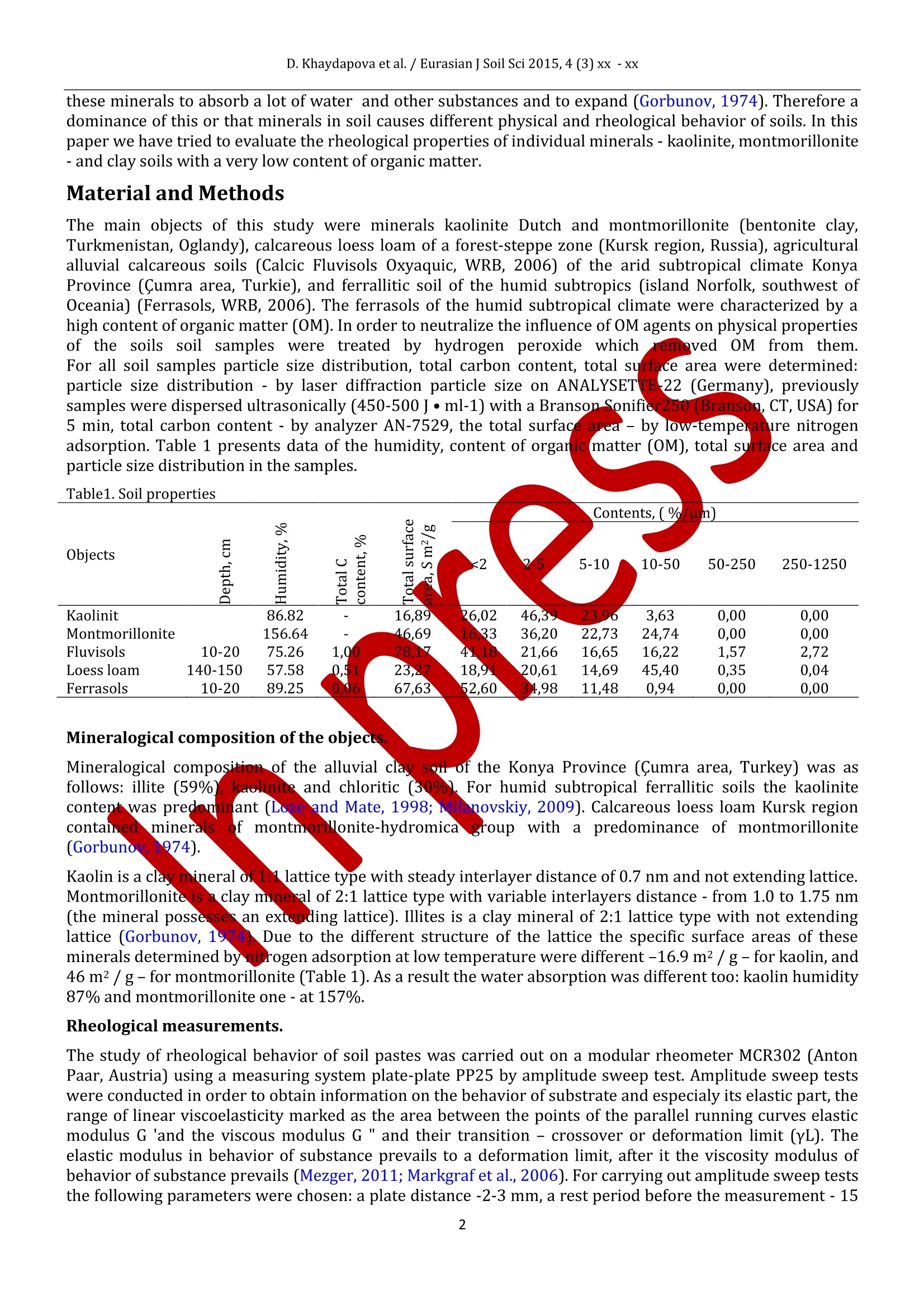
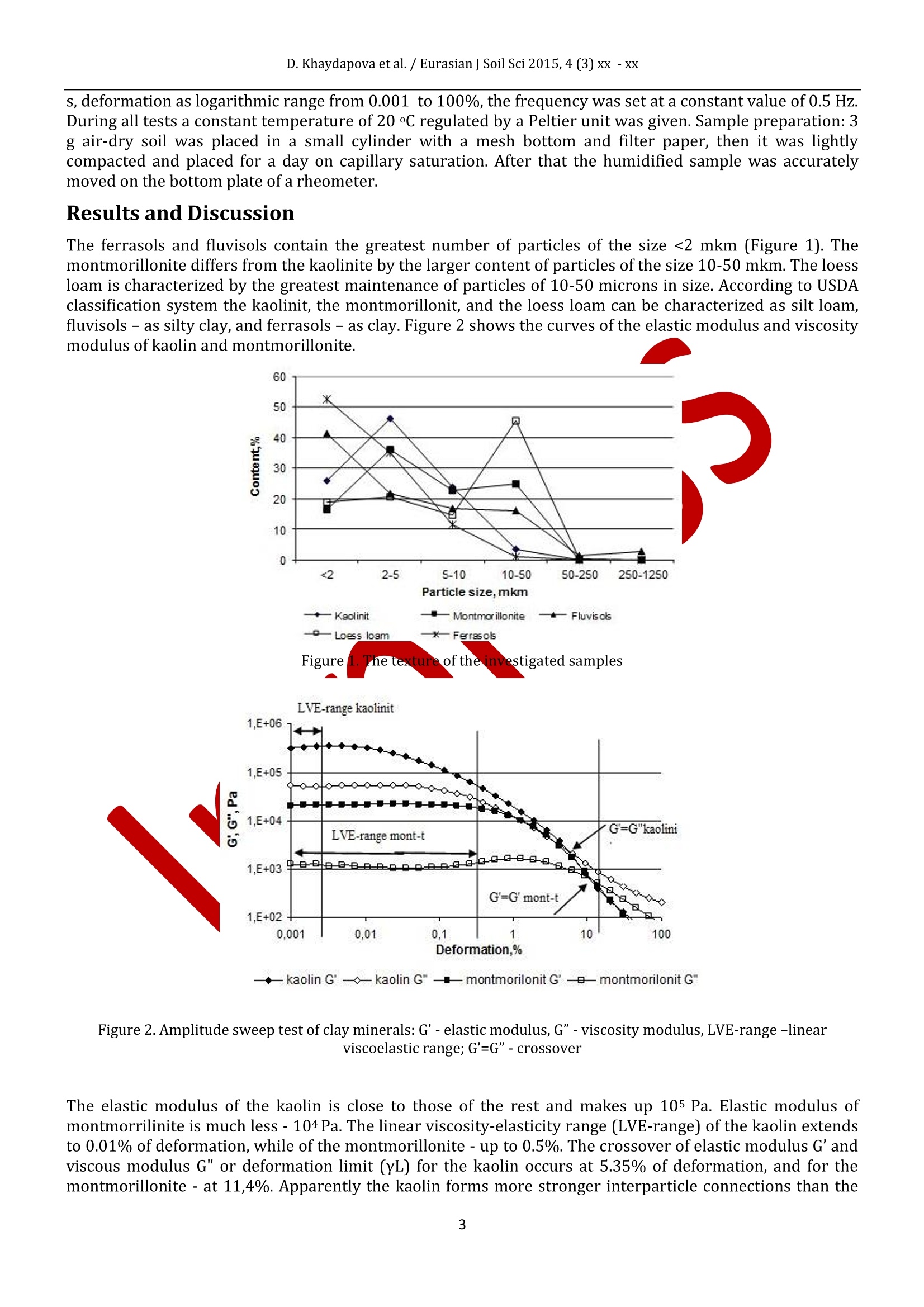
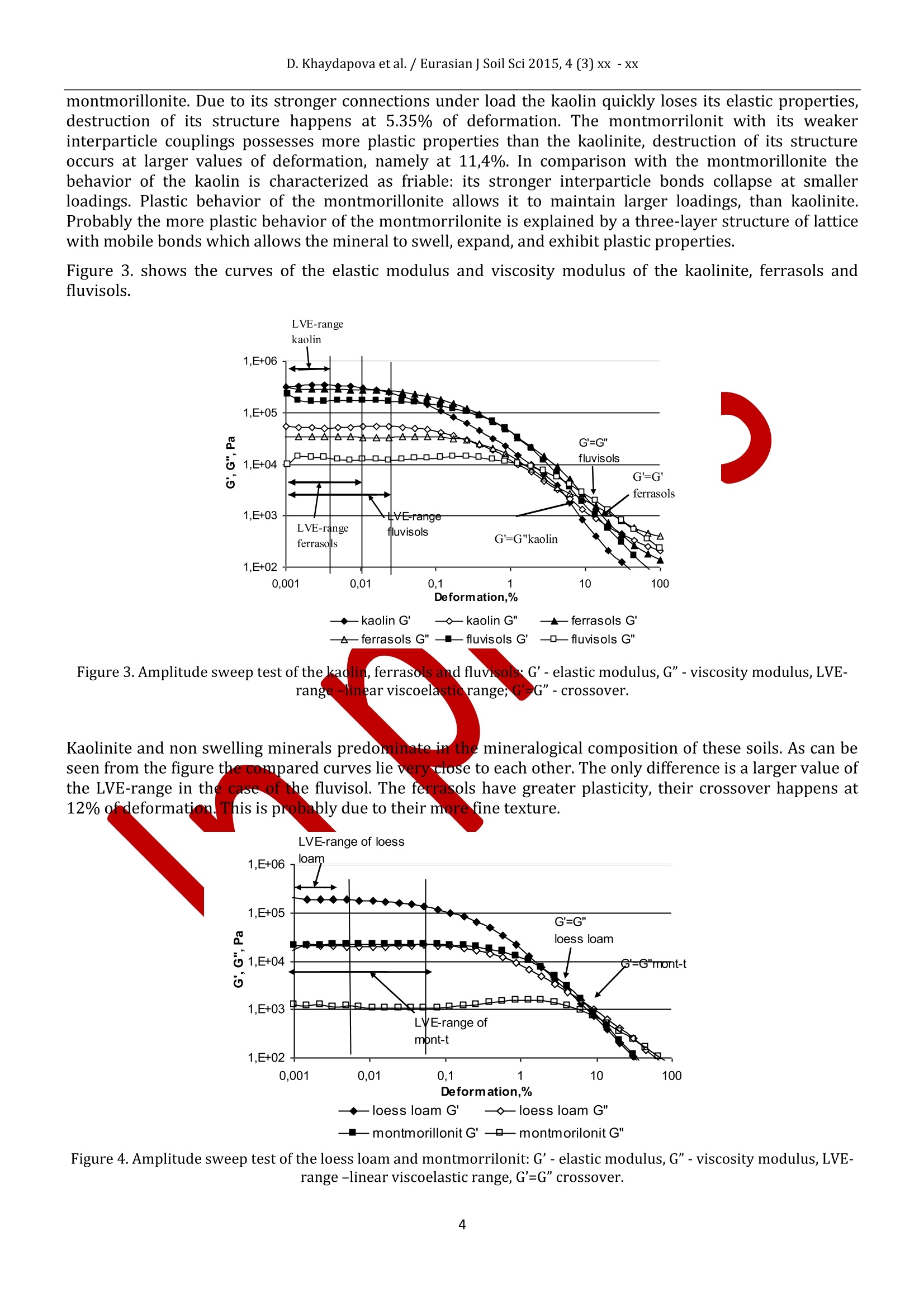
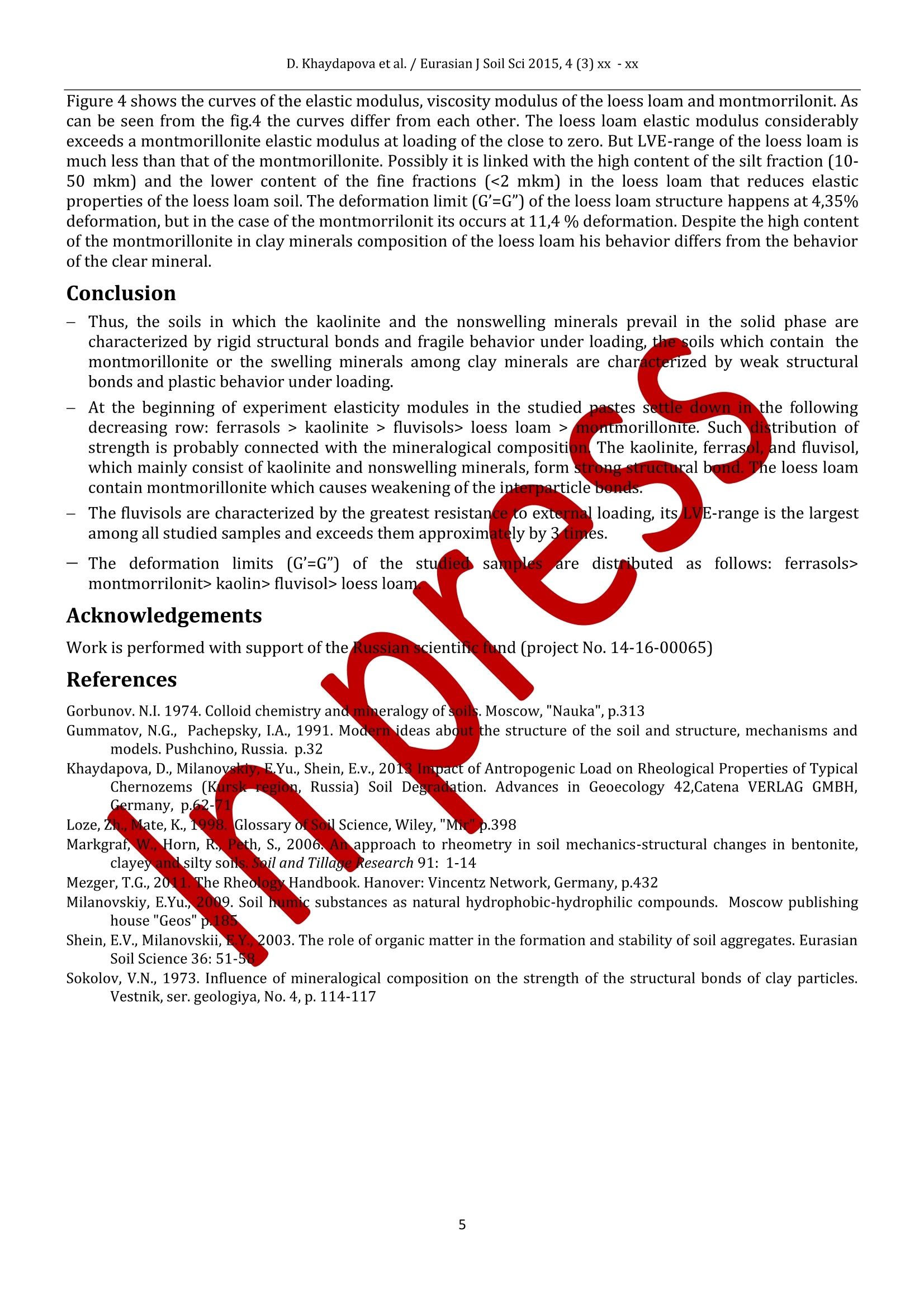
还剩3页未读,是否继续阅读?
北京飞驰科学仪器有限公司为您提供《矿物和黏土中流变特性检测方案(激光粒度仪)》,该方案主要用于其他中理化分析检测,参考标准--,《矿物和黏土中流变特性检测方案(激光粒度仪)》用到的仪器有德国FRITSCH(飞驰)A22大量程纳米激光粒度仪
推荐专场
相关方案
更多










